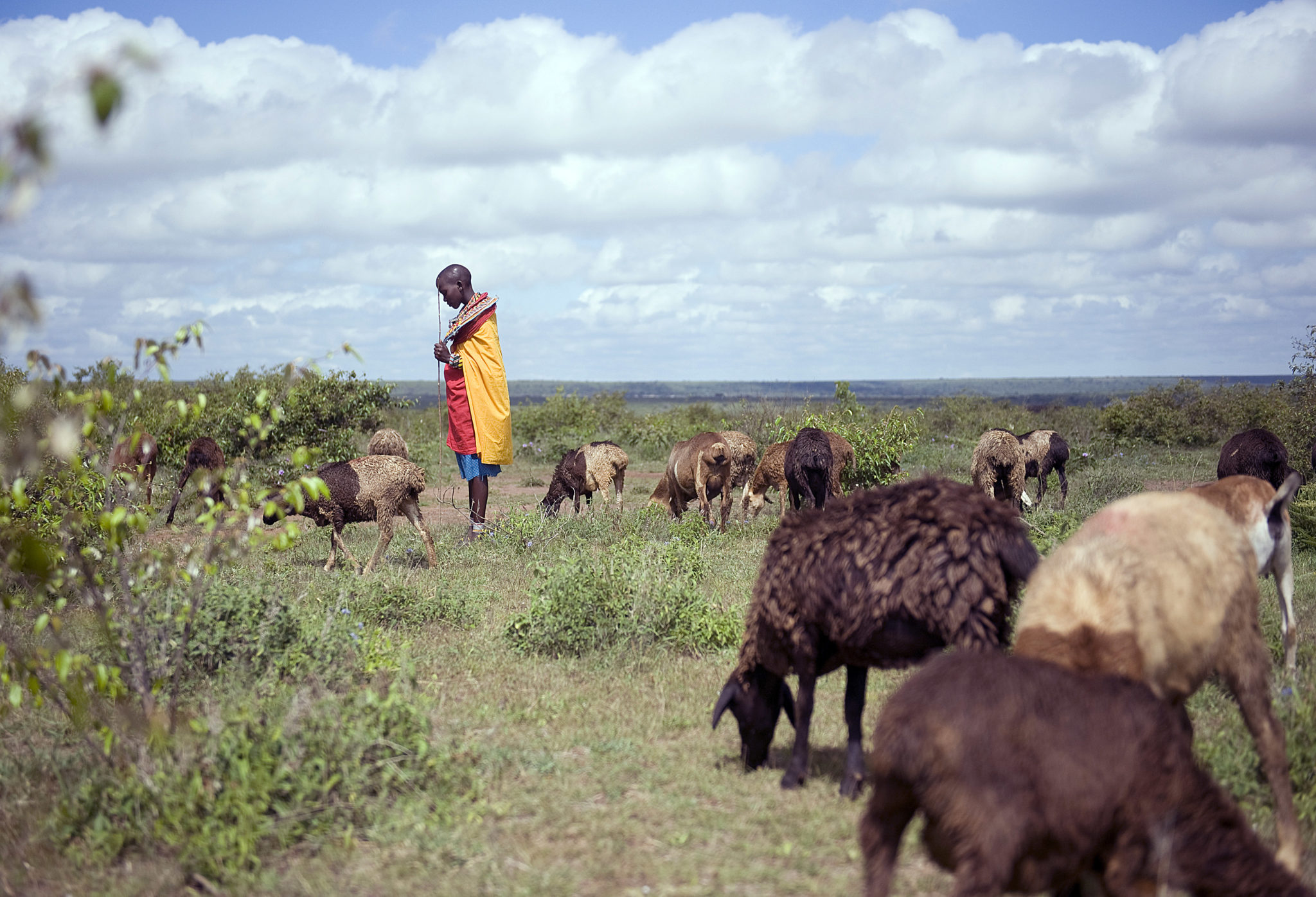The morning calm of Losirien valley was broken by a cow bell tinkling as Benjamin Kerei led his herd of about 50 animals down a parched trail alongside a dry riverbed in southwest Kenya.
On the 10-km (6-mile) journey to a nearby grazing ground, the 24-year-old was on the lookout for fresh wildlife tracks.
Like pastoralists all over the East African country, Kerei needs to keep his cattle away from wild animals to avoid exposing them to infectious diseases, some of which can be deadly to both livestock and humans.
With droughts and floods shrinking the amount of habitable land in Kenya, the search for enough food and water is driving people and wildlife deeper into each other’s territories.
As a result, cases of infectious diseases that are passed from animals to humans – called zoonotic diseases, or zoonoses – are on the rise, said Patrick Kimani, chief executive of the Kenya Livestock Producers Association.
Loading...
In recent years, some herders have found a simple way of keeping their livestock and themselves healthy.
They search for grazing routes that are not used by wildlife, and mark them for others to follow.
In the southern part of Kenya’s Rift Valley, Kerei – who began using the method two years ago – said zoonotic diseases were very common but herders did not know how to treat them.
“This is why we choose to use safe grazing routes to reduce (the) chances of livestock coming into contact with sick wild animals,” he said.
WIDESPREAD CASES
In Kenya, there are at least 36 known zoonotic diseases, according to Samuel Kahariri, chairman of the Kenya Veterinary Association (KVA). The most serious include brucellosis, Rift Valley fever, rabies and anthrax.
Most of these diseases are widespread among pastoralist communities, Kahariri added.
Brucellosis, for example, is one of the most common zoonotic infections globally.
Mainly transmitted from cattle, sheep, goats, elk and deer, it can be passed to humans through the consumption of raw meat or unpasteurised milk, causing flu-like symptoms.
Sam Kariuki, director of the Centre for Microbiology Research at the Kenya Medical Research Institute, estimated that around 750 Kenyans contract brucellosis every year.
But spotty record-keeping makes it impossible to get an accurate picture of how zoonotic diseases spread, he noted.
The data does show that the number of brucellosis cases has increased in the past few years, said James Akoko, a researcher studying the disease at Maseno University in Kisumu County.
Akoko said the negative effects of climate change combined with a growing population meant there was more contact between humans, wild animals and livestock than ever before.
“People are encroaching into areas that were meant for wild animals, and that kind of contact can create opportunity for the diseases to spread across different hosts,” he said.
BRICK TOWERS
Pastoralists like Kerei are working hard to prevent that.
Once they identify routes that do not cross into wildlife territory, they mark them out with small brick towers.
Besides checking for tracks and faeces, they know the presence of big cats like lions and tick-eating birds indicate that grazing animals such as buffalo and deer have moved into an area, said Paul Gathitu, a Kenya Wildlife Service spokesman.
When that happens, the brick towers are dismantled, signaling to others that the route has become risky.
“It is a difficult task ensuring that our livestock do not share pasture or watering points with wildlife,” said Kerei. “But it is the only cheap and readily available measure we have.”
For now, the technique is used mainly by Maasai tribes in the Rift Valley and the Borana in northern Kenya, said Abdulaziz Jama of the Pastoralist Capacity Development Programme.
Anecdotal evidence from local elders confirms the technique works where there are no other options to fight diseases, he added.
“Use of safe grazing routes is one of the many (types of) indigenous knowledge that have been helping marginalized communities battle climate change and zoonotic diseases where the national government has failed,” he said.
REAL-TIME ALERTS?
The government is struggling to manage the spread of zoonotic diseases partly because of the difficulty it faces in tracking them as herders move from one location to another, said the KVA’s Kahariri.
The problem is exacerbated by poor road and communication networks in areas where pastoralists live, making it hard for them to share information with the government when a zoonotic disease appears, Kahariri added.
Ezekiel Kiamba, from Ildamat village in southeast Kenya, said officials should do more to support herders.
The 32-year-old farmer does not use safe grazing routes to protect his 80 cows. Instead, he hires a private vet to regularly check and vaccinate his herd, at $20 per dose.
He would like to see the government use modern technology to send real-time information about outbreaks to rural communities.
“Some of us pastoralists have smartphones which the government could use to work with us and help manage zoonotic diseases,” he said. “I am still waiting for this to happen.” -Reuters
-Kagondu Njagi
Loading...
